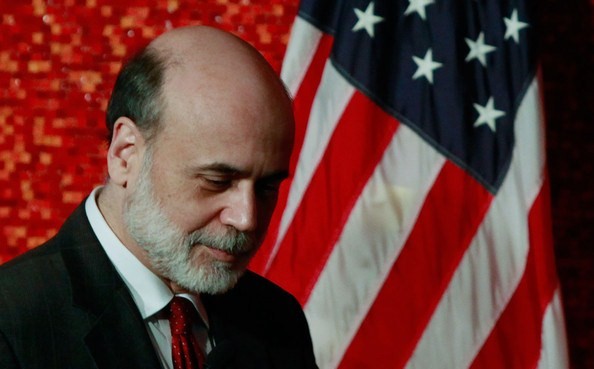
The real security threat, internal or external, to the USA may not come from Osama bin Laden or WikiLeaks. The Nobel prize-winning economist Joseph Stiglitz says banks are undermining the rule of law in America and bad mortgages still fester. In 2009 Stiglitz had advocated nationalization of US banks.
Yesterday, under the compromise contained in the Dodd-Frank Act, the US Federal Reserve Board released details of who borrowed what from its various emergency programmes from December 1st 2007 to July 21st 2010. This prompted a strong response: America is Held Hostage By Global Private Bankers, stated a blog.
“Washington is owned by the private global banking cartel that owns Wall Street. International law does not apply to this criminal cartel. They stole trillions of dollars from the American people with help from corrupt politicians over a stretch of many decades, culminating in the government bailout in 2008, and they have not been held accountable.” More here…
The Fed, in compliance with orders from Congress, today named recipients of $3.3 trillion in emergency aid. Among them were U.S. branches of overseas banks, including Switzerland’s UBS AG; corporations such as General Electric Co. and McDonald’s Corp.; and investors like Pacific Investment Management Co. and computer executive Michael Dell. More here…
The Economist states: “The biggest banks tended to be the biggest borrowers. The data are a bit tricky to interpret: each loan is reported separately even when it represents the rollover of a maturing loan. Bank of America, Wells Fargo, Citibank and JPMorgan Chase all borrowed at least $15 billion each via the Fed’s Term Auction Facility; the total outstanding at any one moment exceeded $45 billion in the case of Bank of America and Wells Fargo, according to Bloomberg.
“One of the more intriguing revelations is how much support the Fed gave to Europe’s banks: an American unit of Belgium’s Dexia had at least $14 billion outstanding at one point; RBS Citizens, a unit of Royal Bank of Scotland, at least $14.5 billion, and Bank of Scotland (part of Lloyds), $12 billion. Is it a coincidence that the parents of all these banks had to be bailed out by their host governments? (The European Central Bank was also far and away the largest users of dollar swap lines from the Fed, at one point borrowing $171 billion. It then lent those dollars to euro-zone banks.)
“Investment banks also became big borrowers when the discount window was opened to them. Bear Stearns borrowed up to $28 billion (no surprise there) as it fended off collapse in March of 2008. But the others did not borrow in size until that fall. Lehman borrowed $28 billion the day of its bankruptcy. (Why it didn’t borrow sooner is a bit puzzling. Was it too scared of looking like it needed the help? And should the Fed have lent to a dealer whose holding company had just sought bankruptcy protection?) Merrill Lynch borrowed up to $33 billion, Morgan Stanley $47 billion, and Goldman Sachs $18 billion.”
In this context, it is interesting that WikiLeaks founder Julian Assange has claimed a fresh “megaleak” will target a major US bank “early next year,” according to an interview published on Monday.
Speaking to Forbes magazine, Assange said that he was ready to unleash tens of thousands of documents that could “take down a bank or two.” Comparing the documents to the emails that exposed Enron’s dealings amid its collapse, the controversial Australian said an existing “big US bank” was the subject of a pending data dump. More here…
Swaraaj Chauhan describes his two-decade-long stint as a full-time journalist as eventful, purposeful, and full of joy and excitement. In 1993 he could foresee a different work culture appearing on the horizon, and decided to devote full time to teaching journalism (also, partly, with a desire to give back to the community from where he had enriched himself so much.)
Alongside, he worked for about a year in 1993 for the US State Department’s SPAN magazine, a nearly five-decade-old art and culture monthly magazine promoting US-India relations. It gave him an excellent opportunity to learn about things American, plus the pleasure of playing tennis in the lavish American embassy compound in the heart of New Delhi.
In !995 he joined WWF-India as a full-time media and environment education consultant and worked there for five years travelling a great deal, including to Husum in Germany as a part of the international team to formulate WWF’s Eco-tourism policy.
He taught journalism to honors students in a college affiliated to the University of Delhi, as also at the prestigious Indian Institute of Mass Communication where he lectured on “Development Journalism” to mid-career journalists/Information officers from the SAARC, African, East European and Latin American countries, for eight years.
In 2004 the BBC World Service Trust (BBC WST) selected him as a Trainer/Mentor for India under a European Union project. In 2008/09 He completed another European Union-funded project for the BBC WST related to Disaster Management and media coverage in two eastern States in India — West Bengal and Orissa.
Last year, he spent a couple of months in Australia and enjoyed trekking, and also taught for a while at the University of South Australia.
Recently, he was appointed as a Member of the Board of Studies at Chitkara University in Chandigarh, a beautiful city in North India designed by the famous Swiss/French architect Le Corbusier. He also teaches undergraduate and postgraduate students there.
He loves trekking, especially in the hills, and never misses an opportunity to play a game of tennis. The Western and Indian classical music are always within his reach for instant relaxation.
And last, but not least, is his firm belief in the power of the positive thought to heal oneself and others.
















